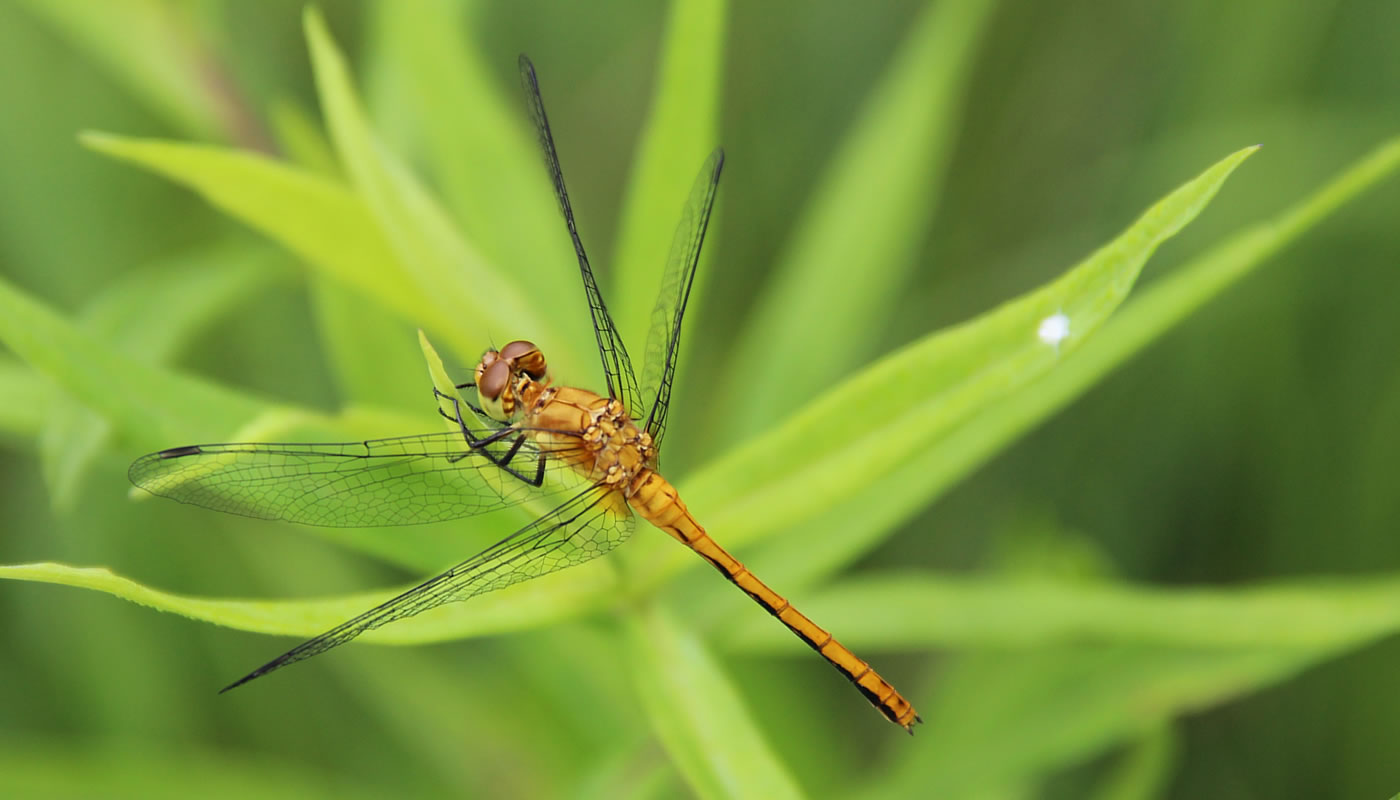The Forest Preserves participates in many long-running community science programs. Help us by becoming a community scientist—you’ll learn to identify local species and collect critical information about plants and animals.
On this page:
- BeeSpotter
- Bird Conservation Network
- Budburst
- Calling Frog Survey
- Friends of the Chicago River Wildlife Monitors
- Illinois Butterfly Monitoring Network
- Illinois Odonate Survey
- Plants of Concern
- Singing Insects Monitoring Program
BeeSpotter
BeeSpotter is a partnership between community scientists and the professional science community designed to educate the public about pollinators by engaging them in a data collection efforts. It is a web-based portal at the University of Illinois for learning about honey bees and bumble bees and for contributing data to a statewide effort for baseline information on population status of these insects. The best way to get involved is to get out there with your camera and capture some good pictures of bees! In order to get your bee pictures on our website, create an account and then add your bee spotting.
Website: beespotter.org
Bird Conservation Network
The Bird Conservation Network (BCN) works to raise awareness of the conservation needs of birds throughout our region by educating the public and working with policy makers and landowners to improve bird habitat. The BCN Survey is an ongoing, year-round monitoring of bird populations intended to inform conservation and restoration efforts. Volunteer monitors work independently using professionally designed point count protocols. Volunteers should be able to recognize most birds by sight and sound. Results are reported to the eBird database.
Contact: Tim Balassie (bcnsurvey@gmail.com) or Judy Pollock (jpbobolink@gmail.com)
Website: bcnbirds.org
Budburst
Budburst is a community-focused, data-driven approach to plant conservation brought to you by the Chicago Botanic Garden.
- Make Observations: Discover the magic of nature wherever you are while documenting plant and animal interactions, monitoring plant life cycles, and uncovering the connections between us and our environment.
- Participate in Projects: Take part in ongoing Budburst projects and assist researchers in answering questions about how humans affect the environment around us.
- Engage in Activities: Dive into a variety of Budburst activities on your own, as a family, in the classroom, or as part of a volunteer group.
- Contribute Your Data: Researchers use the data collected by community scientists to address important environmental questions and contribute to lasting conservation action to preserve the planet.
Website: budburst.org
Calling Frog Survey
The Calling Frog Survey monitors frog and toad populations in northern Illinois and northwest Indiana. Volunteers are trained to listen to the breeding calls of 13 local species and monitor three specific time periods in the spring. Our goal is to establish survey routes throughout the region, resulting in amphibian abundance and distribution data. The CFS provides valuable information to scientists, researchers, and land managers.
Contact: Allison Sacerdote-Velat (asacerdote-velat@naturemuseum.org)
Website: frogsurvey.org
Friends of the Chicago River Wildlife Monitors
Working with scientists from the Forest Preserves of Cook County, Friends of the Chicago River identified bats, osprey, and turtles as river-dependent species present in the river system whose reproductive success could benefit from our help. As of 2020, Friends has installed six maternity colony structures for bats, five osprey nesting platforms and cleared 130+ acres of nesting habitat for turtles. We welcome you to learn more about Friends’ wildlife habitat initiatives and to volunteer to help.
Website: chicagoriver.org
Illinois Butterfly Monitoring Network
The Illinois Butterfly Monitoring Network is a diverse group of volunteers who identify and count butterflies on more than 150 routes on sites in Illinois. Volunteers collect data that are valuable to scientists, researchers and land managers in evaluating how restoration practices and other changes affect butterfly populations.
Contact: Doug Taron (dtaron@naturemuseum.org) or Allen Lawrance (alawrance@naturemuseum.org)
Website: ibmn.org
Illinois Odonate Survey
Volunteers monitor dragonfly and damselfly populations at public and private sites in the tri-state area. The data is shared with local naturalists and landowners.
Contact: Ashley Portala (aportala@naturemuseum.org) or Doug Taron (dtaron@naturemuseum.org)
Website: illinoisodes.org
Plants of Concern
The Plants of Concern trains volunteers to monitor populations of rare plants that are threatened or endangered in Illinois and is administered by staff and volunteers of the Chicago Botanic Garden. Information about habitat quality and disturbance levels helps reveal the factors that influence rare plant populations.
Contact: Gretel Kiefer (gkiefer@chicagobotanic.org)
Website: plantsofconcern.org
Singing Insects Monitoring Program
Volunteers will learn to listen for songs of katydids, crickets, cicadas, and grasshoppers in northern Illinois. Volunteers will collect data for 12 common species and depending on their location, additional species whose ranges are being researched. Ability to hear or record the high-frequency songs of certain species is important to success. Volunteers will report data through singinginsects.net.
- Website: singinginsects.net

